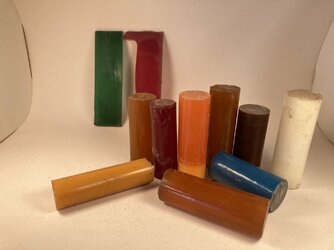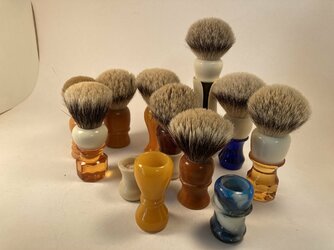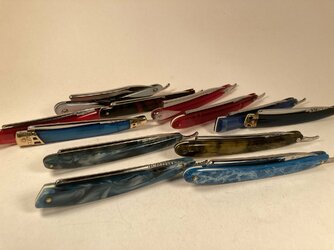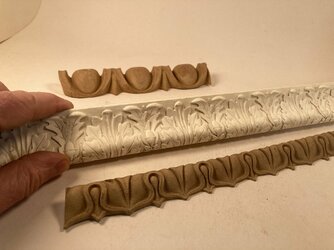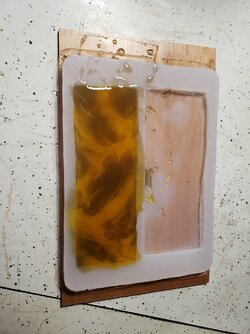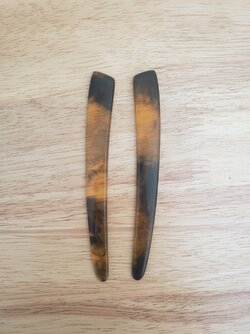I'm fairly new to straight razor restoration. I purchased a few pre-made acrylic and horn scales, even cut out and shaped a pair of scales from buffalo horn that I used to create a silicone mold. I wasn't satisfied with any of the tortoise shell scales I was seeing on the market, so I decided to try making my own with epoxy. Here are some pictures of the prototype I made:


I think it looks deceptively good. I've since pulled it apart and am back to the drawing board. A few lessons I learned:
- the scales are far too thick
- the epoxy was too soft for razor scales (unless I'm mixing/pouring it wrong. I've been experimenting with two different types: Puduo, a random brand off Amazon, and Alumilite's Amazing Clear Cast Plus). A few weeks had passed since I first poured the resin, so it should have been plenty cured. It was rigid when cold, but once you've held it in your hand a few minutes, it warms up and becomes "bendy".
- I need to taper down the brass wedge so it is actually a wedge.
- I probably shouldn't be using brass as the wedge, as the scales were far too heavy. We'll see how this changes once I sand the brass down and thin the scales.
Has anyone else tried using epoxy resin to create scales? I'm considering using a harder resin, something like the Alumilite Performance 80D (Performance 80 D - https://www.alumilite.com/resins/performance-80-d/).
I've also experimented with coating acrylic/plexiglass profiles with epoxy. I cutout, shaped and rough sanded down some clear acrylic scales to do so. It could work, but I'm concerned about how it will hold up in the long run, that the epoxy could wear through and peel off. What do others think about using a thin liner to provide the epoxy rigidity? Any suggestions on the material?
Anyways, appreciate any feedback or thoughts. I've enjoyed reading through past forum threads about making scales.
InB4: I haven't sharpened the razor yet. I've sanded it about as much as I care to, but won't sharpen until I get the scales right.
I think it looks deceptively good. I've since pulled it apart and am back to the drawing board. A few lessons I learned:
- the scales are far too thick
- the epoxy was too soft for razor scales (unless I'm mixing/pouring it wrong. I've been experimenting with two different types: Puduo, a random brand off Amazon, and Alumilite's Amazing Clear Cast Plus). A few weeks had passed since I first poured the resin, so it should have been plenty cured. It was rigid when cold, but once you've held it in your hand a few minutes, it warms up and becomes "bendy".
- I need to taper down the brass wedge so it is actually a wedge.
- I probably shouldn't be using brass as the wedge, as the scales were far too heavy. We'll see how this changes once I sand the brass down and thin the scales.
Has anyone else tried using epoxy resin to create scales? I'm considering using a harder resin, something like the Alumilite Performance 80D (Performance 80 D - https://www.alumilite.com/resins/performance-80-d/).
I've also experimented with coating acrylic/plexiglass profiles with epoxy. I cutout, shaped and rough sanded down some clear acrylic scales to do so. It could work, but I'm concerned about how it will hold up in the long run, that the epoxy could wear through and peel off. What do others think about using a thin liner to provide the epoxy rigidity? Any suggestions on the material?
Anyways, appreciate any feedback or thoughts. I've enjoyed reading through past forum threads about making scales.
InB4: I haven't sharpened the razor yet. I've sanded it about as much as I care to, but won't sharpen until I get the scales right.
Last edited:

